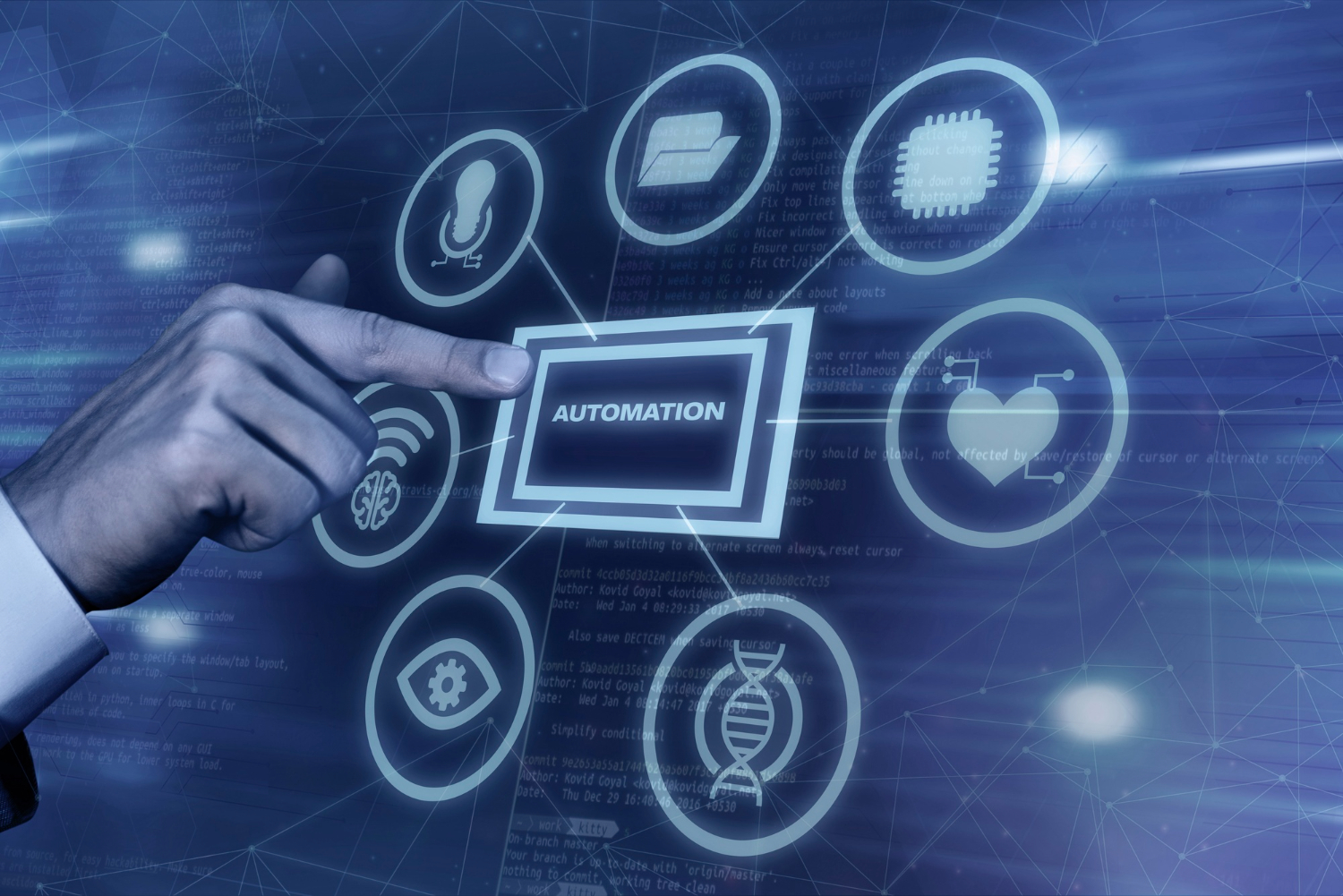Thanks to the use of artificial intelligence solutions, the work on creating new designs has become efficient, innovative, and more tailored to consumer demand. Today, AI creates opportunities for design teams to experiment with new ideas, optimize production processes, and improve user experiences in ways that were unimaginable even a few years ago. Also, it helps newcomers to the industry to speed up their professional development and gives the opportunity (to a certain extent) to create designs for those who don’t have the required skills.
Over a short period of time, AI has become an indispensable part of envisioning, designing, and launching new products. Let's explore how AI revolutionizes the product design industry across several key areas.

AI in Product Design
New techniques for developing and improving both digital and physical products have been made possible by the incorporation of artificial intelligence (AI) into product design. Designers now use AI-driven design tools to automate repetitive tasks, analyze user data, create ideas, and generate design elements that align with user preferences. As a result of these transformations, teams can concentrate on creating user-centered solutions more effectively now.
The use of AI in product design works in both directions and also changes the AI's user experience. When integrating AI, designers must consider how users interact with these systems to provide intuitive and user-friendly experiences. For example, an AI-based recommendation system in an application relies on an interface that makes users easily understand and trust the suggestions it is making. The intersection between AI-driven design and human interaction pushes designers to consider how these technologies may be useful and accessible to a wide range of users.
Visual assets like layouts, icons, and typography can be produced by modern artificial intelligence in design tools. By analyzing user behavior and trends, these tools provide designs that are suited to particular audiences. In addition to saving time, this raises the bar for accuracy in product design processes. However, it is still difficult for designers to remain creative when using automated technologies.
Furthermore, AI-driven design encourages human-machine cooperation. AI enables teams to test and refine design concepts more frequently by automating repetitive operations and offering predictive insights, eliminating the need for human labor. This cooperative process may provide more creative and useful solutions for goods and services that may come from this cooperative process.
However, while the integration of AI in design has brought remarkable advancements, it also presents challenges and limitations that designers and teams must address to create designs that fit potential customers' needs.
How to Use AI for Design
Traditional design methods are being transformed by artificial intelligence, which offers new skills (yet to be obtained) and tools (yet to be learned) that improve outcomes and expedite processes. However, will AI take over UX design? Designers are increasingly using AI technologies to get help with everything from concept generation to user data analysis, but empathy and a human-based approach can’t be replaced by algorithms.
Let’s explore practical applications of AI for UX design and product design and how these systems can be used to optimize creativity and efficiency and provide the easiest way to user satisfaction.
Generating Design Ideas and Concepts
Artificial intelligence can become a great brainstorming assistant, helping designers explore creative solutions when it seems like all the ideas were used and implemented already into someone else’s designs. For example, tools like ChatGPT, Claude AI, Gemini, etc., can suggest multiple approaches to solving a design problem based on the project’s objectives and user needs. These suggestions provide a starting point for ideation, sparking creativity and facilitating the exploration of innovative solutions.
Another application of using AI in product design is generating design concepts. AI algorithms are able to generate mockups and prototypes by analyzing user feedback and current design trends. Machine learning-enabled tools can recommend layouts, color schemes, and typography depending on user preferences or preset parameters. This can accelerate the first stages of the design process while keeping relevance and individuality as the key priorities.
Automating Repetitive Tasks
One of the primary ways to use AI for design is by automating repetitive tasks that take too much time and exploit creative resources. Usually, these tasks consist of sorting items such as big data, resizing image formats, and designing layouts. All of these can be done by AI tools such as image recognition software or auto layout generators and do not require modifications. By completing these mundane routines with the help of AI tools, designers are able to spend more time on the creative part of the designing process, which is beyond access for artificial intelligence right now.
However, every coin has two sides. While AI can handle repetitive tasks and generate ideas, over-reliance on automation can dilute the human touch in design. Creativity, empathy, and context-specific judgment—qualities central to exceptional design—cannot be fully replicated by AI. Designers must find a balance when using AI in their work. It’s important to consider it a tool rather than a replacement for human ingenuity.
Also, AI-powered tools can help designers understand product requirements (PRDs), which can be challenging to interpret. AI tools help designers analyze PRDs, identify gaps, and prioritize their focus areas. By providing prompts to AI systems, such as ‘Highlight the key takeaways and gaps in this PRD,’ designers can generate summaries and clarifying questions that facilitate the design process.
Creating Templates
Designing templates from scratch can be time-intensive, but AI tools simplify this process by offering pre-made frameworks tailored to specific needs. Platforms like FigJam allow designers to generate templates for team retrospectives, brainstorming sessions, or user journey mapping. These templates can then be customized with specific items to align with project goals.
Improving User Research
User research also heavily relies on AI for UX design. Designers can use analytics technologies driven by AI to collect and examine data on user behavior. By offering insights on trends and preferences, these tools help designers in choosing features and design elements for their projects with certainty that they will work. For example, AI-generated heatmaps and session recordings can help designers pinpoint locations where a user interface needs improvements. As a result, the product and its target audience are aligned much better.
Assisting in Accessibility Design
AI is also important for accessible design. AI systems can detect possible obstacles for people with disabilities by examining user data. For example, tools that can identify and modify color contrast or offer suggestions for different wording can help in producing designs that are more inclusive. By tackling typical usability issues, AI for UX design makes sure that products are more accessible to a larger audience.
Predicting User Behavior
AI-driven design allows designers to predict the customers' preferences and behaviors. Machine learning (ML) models that work on the AI platform analyze large volumes of data to know how users will likely use the product. This knowledge helps designers to improve the layouts and functionalities of products to meet the user's needs. Predictive models, for example, can suggest features or buttons likely to be clicked by users and thus make the experience as real as possible.
Improving Collaboration
By offering centralized platforms for file sharing and editing, AI tools can help design teams collaborate more easily. AI-powered real-time feedback and recommendations help improve workflows and cut down on misunderstandings. Because of this, AI for UX design is a great tool for teams with a variety of skill sets or who operate in different time zones. Also, it assists with team-client interactions, allowing both of them to stay on the same page during the whole design process.
By incorporating AI into the design process, teams may increase productivity, produce more customized experiences, and efficiently address customer needs. These applications demonstrate the growing importance of using AI in product design and its potential to reshape traditional workflows.

AI for Product Design
AI is transforming how products are designed, offering tools that support creativity and practicality. By analyzing data, generating concepts, and improving usability, AI-powered tools empower designers to achieve better outcomes.
Let’s explore how product design AI tools improve various stages of the design process, including prototyping, iteration, and usability testing. We will also examine how AI user experience plays a central role in modern product development.
Advanced AI Tools for Product Design
Different product design AI tools are transforming how teams approach the product creation process. These tools utilize machine learning algorithms to generate ideas, evaluate concepts, and refine designs. AI-powered platforms can analyze user data to suggest product features, materials, and even ergonomic improvements. This allows designers to experiment with various design options without requiring extensive manual input.
Customizing User Experiences
AI user experience customization is becoming increasingly significant in product design. AI systems can analyze individual user preferences to deliver personalized product configurations. For example, in e-commerce, AI might suggest different product options, such as colors or materials, depending on past purchases and client preferences. Customizing products to meet particular demands raises user satisfaction.
Simulating and Testing Designs
Before building actual prototypes, designers can test their ideas using AI tools that can replicate product designs in virtual environments. These simulations are capable of assessing performance, usefulness, and durability. This shortens the duration of development and conserves resources. An AI system, for example, can predict a device's performance under particular circumstances, offering insightful information for improvement.
Accelerating Prototyping Processes
By automating the production of both digital and physical prototypes, AI speeds up the prototyping process. Designers can create 3D models or blueprints straight from sketches or spoken descriptions by using machine learning algorithms. Some product design AI tools even integrate with 3D printing technology, further speeding up the transition from concept to prototype.
Optimizing Production Processes
AI also impacts the production stage of product design. Artificial intelligence systems can find inefficiencies and recommend changes by evaluating production data. AI solutions, for example, can detect possible production line bottlenecks or optimize the utilization of different design elements, which lowers waste and costs. These observations guarantee that goods are made effectively and have a good design.
AI continues to play a critical role in modernizing product design processes. From conceptualization to production, its capabilities support designers in creating innovative and user-focused products efficiently and effectively.

AI for UX Designers
As the integration of artificial intelligence in design becomes more prevalent, UX designers are discovering new ways to improve their workflows and improve user experiences. AI provides tools that facilitate data-driven decision-making, produce insights, and expedite procedures that originally took much more time. In addition to increasing productivity, these developments free up designers to concentrate on developing user-centered solutions.
Now, let’s explore how AI for UX design aids in key areas such as workflow efficiency, user testing, adaptive interfaces, accessibility, and collaboration with developers.
Supporting Workflow Efficiency
By providing insights into user behavior and automating repetitive activities, artificial intelligence in design improves workflow efficiency for UX designers. Time-consuming tasks like wireframing, user testing analysis, and responsive layout creation can be handled by AI-powered tools.
With the support of these tools to automate their chores, designers can focus on creating solutions that are more user-focused. This also contributes to better time allocation within a project, as the most important tasks can get more time, which makes the lives of project managers easier, too.
Improving User Testing and Feedback
Sometimes, a product is far from what a user would like to get. Often, this is caused by a lack of testing. By more efficiently evaluating user testing data, AI techniques help UX designers to adjust their products to their target audience’s needs, significantly decreasing the possibility of negative experiences. By spotting trends and abnormalities in user behavior, machine learning algorithms give designers useful information. AI-powered sentiment analysis tools and heatmaps, for instance, can identify usability problems and help designers fix them more quickly.
Designing Adaptive Interfaces
AI for UX design enables the creation of adaptive interfaces that respond to user needs in real-time. These interfaces utilize AI algorithms to learn from user interactions and adjust the interface accordingly. For instance, a digital product might reorganize its layout or content based on user preferences, improving accessibility and usability.
However, as we already mentioned in this article, AI is a tool, not a replacement for a designer. The deep awareness of culture, emotion, and intent that human designers can bring is what AI-generated designs lack so far. We don’t know when this situation may change or if it will change at all. This can be especially troublesome for initiatives requiring a high level of cultural sensitivity or empathy.
Maintaining the human perspective at the center of the design process is important to overcome these obstacles. However, when designers acknowledge these limitations, they can integrate artificial intelligence in designs of any kind and style with a critical eye, using its capabilities to the fullest. Addressing these challenges will pave the way for more balanced and thoughtful use of AI in UX design and product development.
Generating Content and Layout Suggestions
AI-driven design tools can generate content and layout suggestions tailored to specific design projects. By analyzing the project's goals and target audience, these tools recommend typography, color schemes, and layout arrangements. Designers can use these recommendations as a starting point, refining them to align with their vision and brand identity. This way, a designer gets a foundation to start their work. Even if all those suggestions are eventually replaced, they are still useful as they spark solutions.
Accessibility Improvements
AI helps UX designers create more accessible products. Tools equipped with artificial intelligence can identify potential accessibility issues, such as insufficient color contrast or missing alternative text for images. Usually, these 'mistakes' are difficult to identify clearly or articulate, but they operate on an unconscious level, creating a perception that the design feels uncomfortable. By addressing these issues, designers can build products that meet accessibility standards and accommodate a wider audience.

Collaboration with Developers
AI tools also bridge the gap between UX designers and developers. Platforms powered by AI can translate design elements into code, facilitating the handoff process. This reduces discrepancies between design and implementation, guaranteeing the final product reflects the original vision.
By bringing tools and techniques that boost productivity and creativity, artificial intelligence significantly influences product design and user experience. AI tools are freeing up designers to concentrate more on creativity and user-centered solutions by automating monotonous chores and producing data-driven insights. AI tools have been shown to be important in tackling issues like accessibility, personalization, and teamwork in UX and product design.
Professionals may improve user research, accelerate workflows, and provide adaptive interfaces that fit user needs by incorporating artificial intelligence into their design. These developments encourage more sustainable and inclusive methods of product creation in addition to raising the quality of designs.
Designers will surely have even more possibilities to rethink their workflows and create memorable user experiences as AI technology develops. The increasing use of AI in design these days highlights how crucial it is as a major force behind innovation in the digital era.
